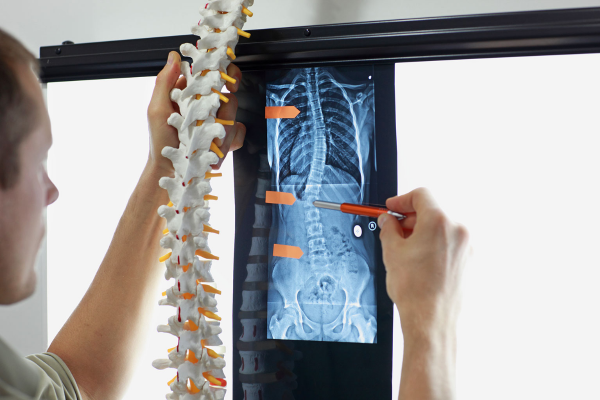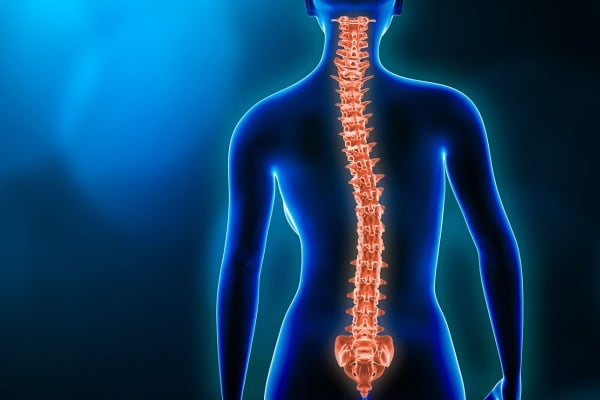
Bracing: The Ins and Outs of the Scoliosis Treatment
Posted on Thu Jul 15, 2021
A scoliosis brace is worn around the upper part of the body to prevent an abnormal spinal curve from worsening. It’s used in adolescents whilst their bones are still growing.
Dr Darren Liu, a world-renowned spinal surgeon, explains the importance of bracing to the parents of his young patients in simple terms: “if you have a tree that is crooked and put a stick in the ground, as the tree grows, the stick will help the tree grow straight.” This philosophy is transferred to children with scoliosis. In other words, children can be braced into a straight position so, as they grow, they maintain that straight position.
A brace must be applied while the child is still growing and, there’s a small window of opportunity for applying a brace which is measured in various ways. A child’s level of maturity can be measured based on a pelvic X-Ray using the Risser classification. If an adolescent has reached the Risser 2 stage, ossification of the iliac crest apophysis is between 25% and 50% complete. Risser 2 means that the child is still growing but the rate of growth has slowed down. Generally, by Risser 2, a male’s voice has broken and a girl has experienced menarche. There is still a risk of curve progression, which is the ideal time for curve management and bracing.
Another method for measuring the progression of ossification is using the Sanders grading. This involves taking an X-Ray of the left hand, fingers and wrist. A combination of these measures helps us fine-tune the timing of the brace and when to remove it.
Occasions when you might brace children and adults
- Early growth modulation – a brace is used when there’s been an early diagnosis and children can be put in a brace for a few years to prevent the curvature from worsening.
- Stop-gap before surgery – a brace is used when the child is too young and short, so operating could stunt their growth. The child is put in a brace until it’s decided they are mature enough and tall enough for surgery to be undertaken. It’s a decision that requires cautious monitoring.
- Adults who are unfit for surgery – a brace is used on an adult if they have painful scoliosis but is not well enough to undergo surgery. A brace can assist them in mobilising and in experiencing less pain.
Types of braces
The most commonly used brace for scoliosis is the Boston brace. It’s usually made from several prefabricated moulds selected to fit the patient’s size and curvature. Corrective pads and trim lines are added to the brace to fit the patient’s scoliosis curve. Another popular brace used for scoliosis is the Wilmington brace which is custom-fitted based on a cast of the patient.
Dr. Lui says, “We use two different types of braces in my practice. In the NHS, we use the Boston brace where almost all research is exclusively based on the literature. There are also custom-made braces which are used more in the private sector. I definitely support them as they’re aiming for much more over-aggressive correction of the scoliosis to try and get the spine straight and help growth modulate.”
How long would a brace last on average? Does this depend on the curve?
Dr. Lui firmly states that the size of the curve is important. As a guideline, the literature supports children who are between 20 and 40 degrees are usually braced. However, Dr. Lui would definitely brace a child with a 45 degree curve, if they wanted to try bracing. On the other end of the scale, it’s thought that a child with less than a 20 degree curve may be caused unnecessary suffering for several years when they may not have needed it at all.
Age is important when determining using a brace but skeletal maturity is more important. For example, there is a big difference in skeletal maturity between a 12 year old girl who started her period when she was 11 and has almost stopped growing and a 12 year old girl who hasn’t started her periods and is growing quickly. This is why imaging is used.

How do you decide when to wean a patient off bracing?
Various factors are involved in this decision. Dr. Lui explains, “for a child that has already been wearing a brace for 3 or 4 years, you want to do your best to get them out of it, as it takes a significant toll. The left hand skeletal maturity X-Ray is used to determine when their growth is slowing down. If the child is in their last year of growth and you can predict that very little change will occur, we will try and allow them to have that last year without a brace, but it depends on the magnitude of the curve.”
On the other hand, there are children who are diagnosed late and want to keep the brace on as long as possible to maximise the possible success. Dr. Lui says he would never stop a child from doing that but we would advise patients that there are diminishing returns the later you start bracing. “It would be hard to make a child who enjoys playing sports stay in a brace 23 hours a day, but then there are some kids I’ve met who would wear them 30 hours a day if they could! I think the one thing to do is not make the child or parent feel guilty for failing to brace.”
How important is the role of imaging before bracing?
Imaging is vital in assessing scoliosis and determining the correct diagnosis and treatment. Various forms of imaging are used:
- Whole spine X-Ray or several X-Rays stitched together to create a whole spine. Or an EOS scan. (Available in a few independent and NHS units). An EOS scan has five times less radiation than a whole spine X-Ray machine
- The whole spine X-Ray assists in determining how much rotation there is, the magnitude of the cobb’s angle or the degree of scoliosis, plus how many different curves there are. It also allows a view of the height of the should and obliquity of the hips
- X-Ray of the pelvis which shows the triradiate cartilage and the Risser grade
- Left hand X-Ray (Sanders grading). By far the most accurate method of measuring skeletal maturity compared to the Risser
- MRI scan of the whole spine to look for cysts, dysraphism, or spinal tumours which can cause scoliosis. This will also show up a Chiari malformation. Most scoliosis surgeons would advocate an MRI of the whole spine, and it helps to ensure it’s idiopathic
Mr Lui’s CPD course: ‘Current Concepts in Scoliosis – Bespoke Treatment for the Patient’ is available on-demand for just £29+VAT. Book on here!
Oryon Imaging offers affordable private MRI scans, Ultrasound scans, X-rays and DEXA scans in London’s world-renowned Harley Street medical district. With MRI scans from just £275, x-rays from £70, ultrasounds from £295 and DEXA at £115, make sure you get the right diagnosis and treatment you need with Oryon Imaging.
To find out more about Oryon Imaging, including our MRI service, click below.
Share this article
Most Recent
Posted on Tue Sep 16, 2025
The Importance Of Being Proactive With Your Health
Posted on Tue Sep 16, 2025
What can be detected in a Whole Body MRI?
Posted on Tue Sep 16, 2025




